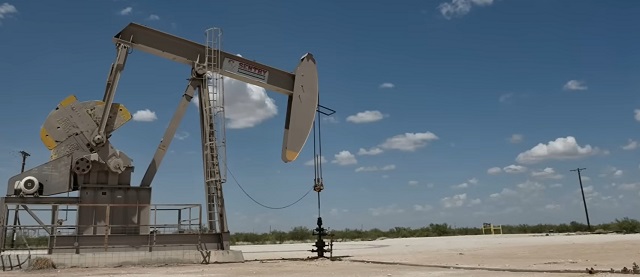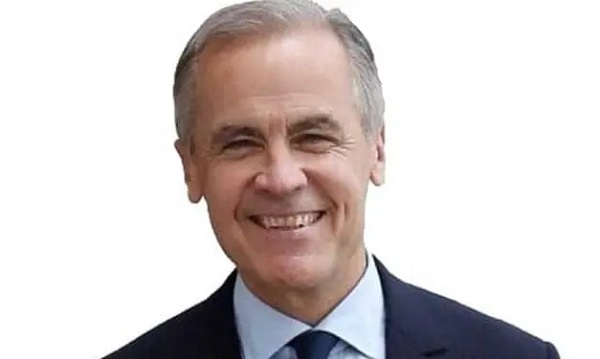Daily Caller
The Silly Peak Oil Debate Rages On

From the Daily Caller News Foundation
“What the Outlook underscores is that the fantasy of phasing out oil and gas bears no relation to fact,” said OPEC Secretary General Haitham Al Ghais
Analysts and professionals in the global energy space have long debated the prospects for reaching peak demand for crude oil. It is an issue that has long sparked debate, some of which becomes emotional among highly invested stakeholders on one side or the other.
In recent years, such stakeholders risk developing cases of whiplash when considering the competing perspectives about this “peak oil” matter published by OPEC and the International Energy Agency (IEA).
IEA has spent the last 12 months predicting an earlier advent of the peak oil phenomenon than pretty much any other experts envision, saying it will come about sometime in this decade, no later than 2030. Not surprisingly, the agency’s analysts doubled down on that projection in its most recent monthly Oil Market Report.
In a section titled “When the Music Stops,” the IEA focused on short-term factors like slowing demand growth in China, where oil consumption has declined year-over-year for the past four months. Noting that Chinese demand growth has slowed to an estimated 180,000 barrels per day (bpd) across 2024, the agency leaned on that data point as a reason to lower its estimated global demand growth to 800,000 bpd.
The same section also pointed to the isolated slowing of U.S. gasoline-deliveries growth in June — a factoid that could simply be statistical noise — as support for its annual growth forecast. But a slowdown in crude demand growth is no surprise, given that economic growth has been slowing throughout 2024. This direct cause-and-effect phenomenon has been a consistent aspect of oil markets across history. It is also a short-term factor whose impact will ultimately be diminished by subsequent events.
In contrast, OPEC’s projections over the past year regarding near-term global demand growth and the anticipated peak in oil demand have reached diametrically opposite conclusions. Last summer, the cartel projected global growth in crude demand for 2024 would be a robust 2.25 million bpd. Slowing economic growth has led OPEC’s analysts to lower that initial prediction over the past two months, but only to 2.1 million bpd — more than double that of both IEA and the U.S. Energy Information Administration (EIA).
Where the concept of peak oil demand is concerned, OPEC has held to an even more oil-bullish stance, stating its projections do not see that threshold being reached anytime during its projection timeframe through 2050. In its annual Global Outlook published last week, OPEC sees oil demand growing by that year to 120 million bpd, a rise of 18 million bpd from current levels.
“What the Outlook underscores is that the fantasy of phasing out oil and gas bears no relation to fact,” said OPEC Secretary General Haitham Al Ghais in the forward to the report.
Al Ghais also pointed out the fact that: “Over the past year, there has been further recognition that the world can only phase in new energy sources at scale when they are genuinely ready, economically competitive, acceptable to consumers and with the right infrastructure in place.” This undeniable reality means that projections of oil demand in the transportation sector being crushed by alternatives like EVs and hydrogen cars are almost certainly overly optimistic. The rapidly faltering market demand for EVs strongly supports that likelihood.
Al Ghais also contends that a “realistic view of demand growth expectations necessitates adequate investments in oil and gas, today, tomorrow, and for many decades into the future.” That contention stands in contrast to the IEA report released in May, 2021, in which IEA Director Fatih Birol urged an immediate halt in all new investments in the finding and development of new oil resources in order to fight climate change. By August of that year, Biral was comically urging oil companies to increase their oil production in order to help re-balance an undersupplied global market.
Episodes like that have led many to question whether IEA bases its projections related to oil markets on data or on wishful thinking. The validity of such questions was only reinforced when Birol announced early this year that the agency’s mission was being expanded into outright advocacy for promoting the energy transition.
So, who is right? We’ll find out in 2030, but the smart money is on the group with billions riding on the answer.
David Blackmon is an energy writer and consultant based in Texas. He spent 40 years in the oil and gas business, where he specialized in public policy and communications.
Daily Caller
Trump’s One Big Beautiful Bill Resets The Energy Policy Playing Field


From the Daily Caller News Foundation
Make no mistake about it, the One Big Beautiful Bill Act (OBBBA) signed into law on Friday by President Donald Trump falls neatly in line with the Trump energy and climate agenda. Despite complaints by critics of the deal that Majority Leader John Thune struck with Alaska Sen. Lisa Murkowski to soften the bill’s effort to end wind and solar subsidies from the Orwellian 2022 Inflation Reduction Act, the OBBBA continues – indeed, accelerates – the Trumpian energy revolution.
Leaders in the oil and gas industry, hamstrung at every opportunity by the Biden presidency, hailed the bill as a chance to move back into some semblance of boom times. Tim Stewart, President of the U.S. Oil and Gas Association, told his members in a memo that, “For the oil and gas industry, the bill…signals a transformative opportunity to enhance domestic production.”
API CEO Mike Sommers also praised the OBBBA as a positive step for his members: “This historic legislation will help usher in a new era of energy dominance by unlocking opportunities for investment, opening lease sales and expanding access to oil and natural gas development.
While leaders of organizations like those must curb their enthusiasm to some extent in their public statements, they and their peers must be somewhat amazed at how much real substantive change the thin GOP majorities shepherded by Thune and House Speaker Mike Johnson managed to stuff into this bill. This industry, historically an easily demonized bogeyman for Democrats and too often ignored by previous Republican presidents, does not experience days as encouraging as July 3 was in the nation’s capital.
Even so, many Republicans, especially in the House, remained unsatisfied by amendments the Senate made to the bill related to IRA subsidy rollbacks. To help Speaker Johnson hold the party’s narrow House majority together, President Trump committed the executive branch to strict enforcement of the new limitations, and promised the White House will work with congressional allies to move a major deregulation package ahead of the 2026 midterm elections.
But the OBBBA as passed is chock full of energy and environment-related provisions. FTI Consulting, a business consultancy with a major presence in Washington, DC, published a quick analysis Thursday that projects natural gas and nuclear as the biggest winners as the OBBBA’s impacts begin to take hold across the United States. Interestingly, the analysis also projects battery storage to expand more rapidly over the next five years even as wind and solar suffer from the phasing-out of their IRA subsidies.
The side deal struck by Thune and Murkowski is likely to result in significant new investment into wind and solar facilities as developers strive to get as many projects on the books as possible to meet the “commenced construction” requirement by the July 4, 2026 deadline. The bill’s previous language would have required projects to be placed into service by that time. But even that softer requirement will almost certainly cause a flow of capital investment out of wind and solar once that deadline passes, given the reality that many of their projects are not sustainable without constant flows of government subsidies.
What it all means is that the OBBBA, combined with all the administration’s prior moves to radically shift the direction of federal energy and climate policy away from intermittent energy and electric vehicles back to traditional forms of power generation and internal combustion cars, effectively reset the policy playing field back to 2019, prior to the COVID pandemic. That was a time when America had become as energy independent as it had been in well over half a century and was approaching the “Energy Dominance” position so dear to President Trump’s heart.
Trump’s signing of the OBBBA gives the oil and gas, nuclear, and even the coal industry a chance at a do over. It is an opportunity that comes with great pressure, both from government and the public, to perform. That means rapid expansion in gas power generation unseen in 20 years, rapid development of next generation nuclear, and even a probable chance to permit and build new coal capacity in the near future.
Second chances like this do not come around often. If these great industries fail to grab this brass ring and run with it, it may never come around again. Let’s go, folks.
David Blackmon is an energy writer and consultant based in Texas. He spent 40 years in the oil and gas business, where he specialized in public policy and communications.
conflict
‘They Don’t Know What The F*ck They’re Doing’: Trump Unloads On Iran, Israel


From the Daily Caller News Foundation
President Donald Trump expressed frustration Tuesday after Iran broke a ceasefire, prompting retaliation from Israel during a gaggle with reporters on the White House lawn.
Trump announced the ceasefire Monday, saying it was supposed to take effect at 1 a.m. Eastern Daylight Time, but Iran fired missiles at Israel Tuesday. Trump vented, saying the countries had been “fighting so long” they couldn’t make peace.
WATCH:
“You know, when I say okay, now you have 12 hours, you don’t go out in the first hour just drop everything you have on them,” Trump said. “So I’m not happy with them. I’m not happy with Iran either. But I’m really unhappy if Israel is going out this morning because the one rocket that didn’t land, that was shot, perhaps by mistake, that didn’t land, I’m not happy about that.”
“We basically have two countries that have been fighting so long and so hard, that they don’t know what the fuck they are doing,” Trump added.
The United States struck facilities in Fordow, Natanz and Isfahan related to Iran’s effort to develop nuclear weapons early Sunday morning local time, using as many as 14 GBU-57 Massive Ordnance Penetrators in the operation, which involved a 37-hour flight by seven B-2A Spirit bombers.
The American strikes came ten days after Israel launched a military operation targeting the Iranian nuclear program. Iran has responded with repeated missile attacks on Israeli cities and a refusal to resume negotiations over its efforts to pursue nuclear weapons.
-

 Alberta20 hours ago
Alberta20 hours agoAlberta Independence Seekers Take First Step: Citizen Initiative Application Approved, Notice of Initiative Petition Issued
-

 Crime19 hours ago
Crime19 hours agoNational Health Care Fraud Takedown Results in 324 Defendants Charged in Connection with Over $14.6 Billion in Alleged Fraud
-

 Health18 hours ago
Health18 hours agoRFK Jr. Unloads Disturbing Vaccine Secrets on Tucker—And Surprises Everyone on Trump
-

 Bruce Dowbiggin21 hours ago
Bruce Dowbiggin21 hours agoThe Game That Let Canadians Forgive The Liberals — Again
-

 Alberta2 days ago
Alberta2 days agoCOVID mandates protester in Canada released on bail after over 2 years in jail
-

 armed forces2 days ago
armed forces2 days agoCanada’s Military Can’t Be Fixed With Cash Alone
-

 Business2 days ago
Business2 days agoCanada’s loyalty to globalism is bleeding our economy dry
-

 Business2 days ago
Business2 days agoCarney’s spending makes Trudeau look like a cheapskate






